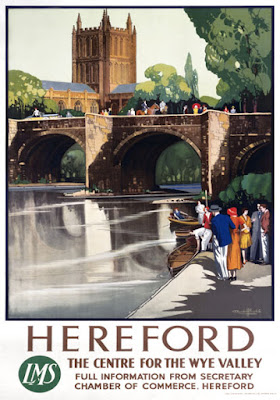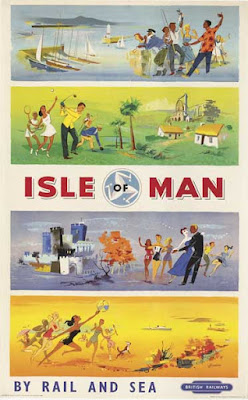As can be divined from the CD’s
title and track-listing, this is a journey through the Church’s Year, with specific
reference to Lincoln Cathedral. It is appropriate in this secular age that the
excellent liner notes include a succinct, but informative, two-page
introduction to the progress of the Christian Year. This detail will not be a revelation to most
enthusiasts of this kind of music, but hopefully, it will be rewarding to
listeners who have little connection with the tradition.
As I complete this review, we are
in preparation for the Birth of Jesus Christ on 25 December 2018. Even though
this has been ongoing since the middle of September in many shops, the true beginning
of the Christmas Season and the Christian Year was Advent Sunday on 2 December
past.
The Choir of Lincoln Cathedral begin
with a thoughtful, but ultimately urgent, account of William Byrd’s setting of
St Mark’s text (Mark 13: 35-37) enjoining the faithful to watch for the coming
of the Lord: ‘Vigilate’. This is
followed on Christmas Day by the well-known traditional French carol ‘Ding Dong
Merrily on High’ in the Wilberg and Stevens arrangement. The organ part in this
version is particularly stunning. Felix Mendelssohn’s ‘There shall a star from
Jacob come forth’ featured in the unfinished oratorio Christus. This anthem celebrates the coming of the Three Kings and
the Epiphany (manifestation) of Jesus as the Christ to the Gentiles with
reference to New Testament ‘history’ and Old Testament ‘prophecy’. It is
clearly an attractive and popular piece, but I find that it is just a bit
insipid. The work is in three sections,
opening with a recitative, followed by a trio and concluding with a chorus.
Very shortly after putting away the
Christmas decorations, the Shrove Tuesday pancakes are being made and Ash
Wednesday is upon us. This is the start of Lent which is a season of preparation.
This includes, for Christians, a personal and global recognition of the sinful
nature of humankind, individually and collectively. Samuel Sebastian Wesley’s
High Victorian anthem ‘Wash me Thoroughly’ meditates on the need for forgiveness.
Look out for the long-breathed melodies, gorgeously subtle harmonies and
delicious suspensions. It is a perfect miniature.
Edward King was an Anglo-Catholic
(High Church) bishop of Lincoln who died in 1910. He is fondly recalled by this
‘wing’ of the church and is commemorated with a ‘black letter day’ or ‘lesser festival’
on the date of his death, 8 March. Patrick Hawes, well known for his Highgrove Suite and lately his Great War Symphony, has provided a
lovely anthem. ‘My Dearest Wish’ which is based on texts from the King’s
writings. It has a ‘wide-ranging’ vocal line, gorgeous harmonies and is
accompanied by a well-judged organ part. Truly lovely: a credit to Bishop
Edward King’s life and work.
The Feast of the Annunciation is usually
held on 25 March. Clearly this is
exactly nine months before Christmas Day. Sometimes, this is in the middle of
the Easter Celebrations when it is ‘translated’ to a suitable date after Easter
Monday. Robert Parsons, who was a near-contemporary of William Byrd, is the
source of a characteristic setting of the Angel Gabriel’s words ‘Ave Maria’- ‘Hail
Mary.’ This is a deeply-considered anthem which gives rapt attention to the
text and provides a heart-easing blessing on this auspicious day in the
Church’s calendar. It is believed that poor old Parsons drowned in the River
Trent at Newark. William Byrd succeeded him as one of the Gentlemen at the
Chapel Royal.
It is now time to enter
Passiontide. This is taken as the last two weeks of Lent ending on Holy
Saturday. The choir have chosen Richard Lloyd’s idiomatic setting of the
spiritual ‘Were you there when they crucified my Lord?’
Thomas Tallis’s Salvator Mundi (O
Saviour of the World) has been selected to recall the darkness of Good Friday
when the Christ died on the Cross. It was published in the 1575 volume Cantiones Sacrae which was a joint
enterprise with William Byrd. This perfectly engineered anthem sees the opening
plainchant develop into the wonderful world of polyphony.
Few listeners to ecclesiastical
music can be unaware of Bob Chilcott’s contribution to the genre. The present
anthem for Easter is not a triumphant shout, but a profound contemplation, inspired
by a text by George Herbert, ‘The Arising’. This anthem showcases Chilcott’s
wonderful harmonies and magical melodic lines. It is a restrained work that considers
the spiritual, rather than the historical, aspect of the Resurrection on Easter
Day.
The Feast of the Ascension, where
Jesus is taken up into heaven, is celebrated with Gerald Finzi’s largely
atypical anthem ‘God is Gone Up’. This great paean of praise was composed
during 1951 for that year’s St Cecilia’s Festival at St Sepulchre-without-Newgate
Church, Holborn Viaduct. It is far removed from the quiet pastoralism that
Finzi is typically (sometimes unfairly) recalled.
From this point onward, the
Church enters the long (seemingly interminable) period of Trinity. Look at the
Prayer Book – from the First to the Twenty-Fifth Sunday[s] after Trinity! The
present CD from Lincoln have included several liturgical highlights that occur
during this ‘teaching’ period in the Church’s Calendar.
The most ‘modernistic’ work on
this CD is Judith Bingham’s setting of the ‘Corpus Christi Carol’ which honours
the institution of the Eucharist. This
piece makes a musical journey from light to shadow.
St John the Baptist’s Day (24
June) is celebrated by Sir Edward Elgar’s Benedictus in E, op.34 no.2.
This, along with its accompanying ‘Te Deum’ was composed for the 1897 Hereford
Three Choirs Festival. It was dedicated to George Robertson Sinclair. Sinclair
is reputed to have said about the work that ‘It is very, very modern, but I
think it will do.’
Charles Wood’s ‘O Thou, the
central Orb’ was selected to celebrate the Feast Day of the Blessed Virgin Mary
on the 8 September. Wood’s anthem ‘speaks of the joy of faith, the company of
the saints and the transformation of love that God brings to those who trust
him.’ His setting is largely romantic in sound with its solo bass part and
reassuring ternary form. The powerful conclusion is stunning.
The trumpet, played by Sgt Tom
Ringrose, is used to point up the effect of Mark Blatchly’s setting of Laurence
Binyon’s great poem, ‘With Proud Thanksgiving.’ The traditional bugle call of
the ‘Last Post’ is introduced during the final verse, ‘At the going down of the
sun…’ The general progression of Blatchly’s piece is a march with a singable
tune. The liner notes are correct in suggesting that this music looks back to
Elgar and the early twentieth-century.
No introduction is needed to
Johannes Brahms’s beautiful ‘Wie lieblich sind deine Wohnungen’ (How Lovely are
thy Dwelling Places) from A German
Requiem. It is sung here in German. This piece was picked to commemorate (17
November) St Hugh, onetime Bishop of Lincoln. The liner notes state that the
text’s ‘longing for the divine presence’ is entirely appropriate for a cleric who
worked so hard for Lincoln’s faithful and for the fabric of the Cathedral.
The penultimate track features
John Taverner’s ‘Christe Jesu, pastor bone’ chosen to celebrate the Feast of
Christ the King. This festival is usually on the Last Sunday of the Church’s
Year, that is, just before Advent. It is seen as a summing up of the events
that have gone before. Taverner’s music is restrained and forward-looking
towards the achievement ‘of Thomas Tallis and his contemporaries.’
The final track is Ralph Vaughan
Williams’s ‘Antiphon’ from his Five
Mystical Songs. These settings of George Herbert’s poetry were completed in
1911. Herbert is commemorated in the Anglican
Tradition on 27 February. So, it is a wee bit out of chronological order here
but makes a good closing number. Antiphon
is written for chorus alone. This is a great song of praise. The words ‘Let all
the world in every corner sing: my God and King,’ is the triumphant refrain.
Frank Howes has suggested that this song is a ‘moto perpetuo’ that reflects the
Sea Symphony with its
boisterousness. It is a splendid and
uplifting conclusion to both the Mystical Songs and this CD.
Great sound quality on this disc.
Excellent performances from all concerned. Splendid liner notes. This new
release from Regent perfectly presents Lincoln Cathedral Choir, the organ and
the Church’s Year. A rare treat, indeed.
Track Listing:
A Year at Lincoln:
The Choir of Lincoln Cathedral
Advent: William BYRD
(c.1538-1623) Vigilate (1589)
Christmas: Ding! dong! merrily on high 16th c
French, arr. Mack WILBERG (b.1955)
and Peter STEVENS (?/2007) (b.1987)
Epiphany: Felix MENDELSSOHN
(1809-1847) There shall a star from Jacob come forth (from Christus (1847))
Ash Wednesday: Samuel
Sebastian WESLEY (1810-76) Wash me thoroughly (c.1840)
Bishop Edward King; Patrick
HAWES (b.1958) My dearest wish (2010)
Annunciation: Robert PARSONS
(c.1535-1571/2) Ave Maria (?)
Passiontide: Were you there? Spiritual, arr. Richard LLOYD (b.1933) (1996)
Good Friday: Thomas TALLIS
(1505-85) Salvator mundi (pub.1575)
Easter: Bob CHILCOTT
(b.1955) Thy arising (2012)
Ascension: Gerald FINZI
(1901-56) God is gone up (1951)
Corpus Christi: Judith
BINGHAM (b.1952) Corpus Christi Carol (2012)
St John The Baptist: Edward
ELGAR (1857-1934) Benedictus in F, Op 34 no 2 (1897)
Blessed Virgin Mary: Charles
WOOD (1866-1926) O Thou, the central orb (1915)
Remembrance: Mark BLATCHLY
(b.1960) For the fallen (1980)
St Hugh: Johannes BRAHMS
(1833-97) Wie lieblich sind deine Wohnungen (from A German Requiem) (1865-68)
Christ The King: John
TAVERNER (c.1490-1545) Christe Jesu, pastor bone (?)
George Herbert: Ralph
VAUGHAN WILLIAMS (1872-1958) Antiphon (from Five Mystical Songs) (1906-11)
The Choir of Lincoln Cathedral/Aric Prentice, Jeffrey
Makinson (organ), Sgt Tom Ringrose (trumpet)
Rec. Lincoln Cathedral 5-7 June 2018
REGENT REGCD532
With thanks to MusicWeb International where this review was first published.







